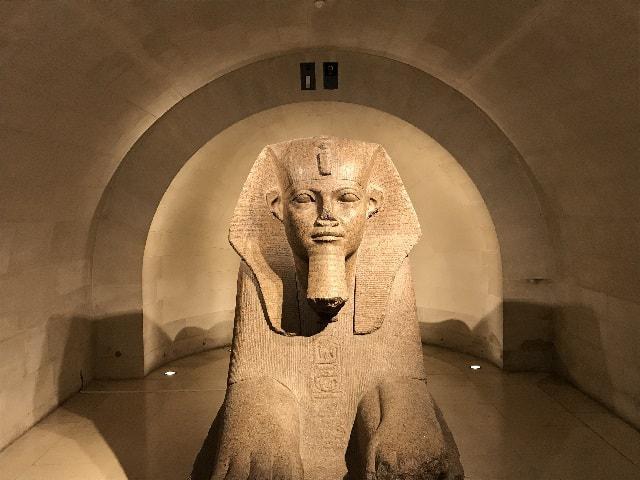Sphinx of Tanis

2500 BC.
This is the greatest craftmanship example of sphinx carved in a single block of granite. It gives the Pharaoh the body of a lion, which is the earthly incarnation of the sun god! The King, whose face we see, secures eternal life, but above all: The Great Sphinx of Tanis is the immortal guardian of sacred places. Its location in the Louvre is impressive, as it welcomes visitors to the Egyptian department of the museum and its sacred objects. Many centuries ago, this sculpture would have been guarding the entrance to a sanctuary.
The Pharaoh's identity is unknown. There are many Kings names inscribed in the sculpture, which has led to believe that the original name may have disappeared, suggesting that the Sphinx is very old.
The mystery surrounding this great sculpture is accentuated by how it was found: look at the walls surrounding it, where you can see the reliefs that show Ramses II (1279-1213 BC) praying at the “Great Sphinx” of Giza. Apparently, Napoleon found these reliefs between the legs of The Great Sphinx of Tanis, which reveals how important the sphinxes were to the Egyptians.
© Tourblink